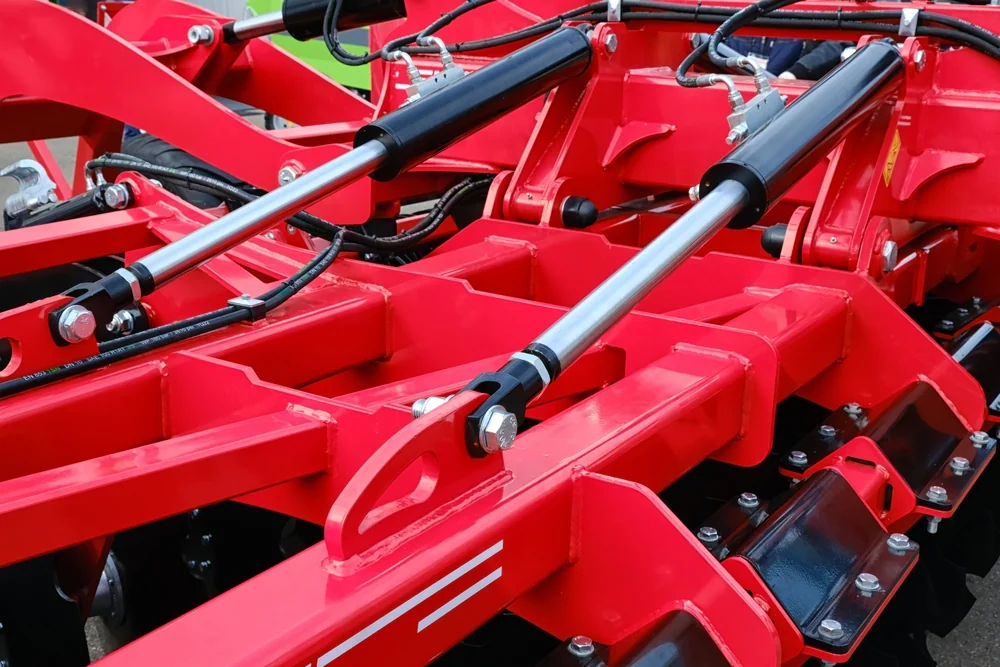When hydraulic systems fail, the resulting downtime can disrupt entire operations, whether halting construction schedules, delaying production lines or grounding heavy machinery. For businesses in various industries, a reliable hydraulic service partner is more than a repair provider; it’s a long-term performance ally. At Taminda Hydraulics & Engineering, we know how the right maintenance strategy can improve productivity, equipment lifespan and safety outcomes.
Selecting a service provider extends beyond addressing immediate issues. It means choosing a team with deep technical knowledge, genuine local understanding and the engineering capacity to tailor solutions that fit your equipment and operational environment. Below, we outline what every company should know before partnering with a hydraulic service provider.

Choosing a local specialist for hydraulic repairs in Tamworth ensures your machinery is maintained by technicians who understand the region’s conditions and industry needs. Tamworth’s hot, dusty climate and demanding agricultural, transport and industrial sectors create unique pressures on hydraulic systems. Local experts can respond faster, apply region-specific solutions and ensure compliance with Australian safety and environmental standards. Their hands-on experience with the equipment and terrain means every repair or rebuild is tailored for long-term reliability and performance.
Every hydraulic system operates within its own environment and workload, and understanding those local demands is key to effective service. From agriculture and mining to manufacturing and transport, each industry places unique pressures on hydraulic systems. Our technicians recognise these nuances instantly, tailoring repair and maintenance strategies to suit the intensity of use. Instead of simply fixing what’s broken, they evaluate how each factor influences long-term performance and reliability. Local considerations include:
Hydraulic systems in inland or high-heat areas face challenges that differ sharply from those in coastal or temperate regions. A skilled local service partner understands these conditions and adapts maintenance accordingly. Not just following manufacturer guidelines, but real-world experience. High temperatures can thin hydraulic fluid; dust and grit from farm or earthmoving sites can invade fittings and hoses. By planning around these realities, technicians keep systems stable, efficient and safe all year long. Examples of environmental factors that impact performance include:
When hydraulics fail, every hour of downtime costs money and momentum. A burst hose on a harvester, a lift malfunction on a freight truck or a stalled excavator can halt entire projects. In those moments, rapid-response service isn’t optional; it’s essential. A local provider can despatch technicians directly to the site, equipped with the right parts and tools to perform immediate repairs. This capability eliminates the need for towing or extended wait times, allowing operations to resume the same day. Their mobile service units are designed for efficiency, capable of performing:
Hydraulic support goes beyond simple repairs; it’s about managing your equipment’s entire lifecycle through preventive strategies, diagnostics and upgrades that maximise reliability. Real capability is measured not by workshop size, but by the quality and precision of the service delivered.
A strong hydraulic partnership is built on a proactive maintenance framework that supports your equipment’s entire lifecycle. A well-planned maintenance programme ensures these systems operate efficiently and safely for years, rather than being replaced prematurely. By tracking the condition of key components, we help businesses minimise unexpected failures and align servicing schedules with production cycles. This kind of lifecycle planning improves asset longevity and reduces the total cost of ownership. A comprehensive maintenance strategy includes:
A comprehensive maintenance programme combines scheduled inspections, fluid analysis and component tracking to catch problems early. Diagnostic tools then enable predictive maintenance, anticipating issues before they interrupt operations and extending component life across the system.
Even with regular maintenance, hydraulic components eventually reach a point where repair alone isn’t enough. Overhauls and refurbishments restore performance to as-new condition while maintaining full system compatibility, ensuring precision, reliability and full transparency throughout the rebuild process. Here are the benefits of professional overhauls and refurbishments:
Equally important is the use of genuine OEM (original equipment manufacturer) parts. Using certified components rather than generic alternatives preserves system efficiency, safety and manufacturer warranty. OEM parts are engineered for precise fit and durability, especially critical in high-pressure or high-temperature hydraulic systems. Why OEM parts matter:
Hydraulic systems power the machinery that keeps operations moving, so any failure immediately impacts productivity. That’s why a capable hydraulic partner must provide comprehensive maintenance and diagnostic services that go far beyond reactive repairs. We have advanced diagnostic tools and years of hands-on experience to evaluate hydraulic efficiency, detect early-stage wear and prevent costly breakdowns. This means examining every component to ensure it performs within precise tolerances.
In industries where machinery works long hours in demanding conditions, hydraulic failures rarely occur at convenient times or locations. Whether it’s a burst hose in a paddock or a loader failure on-site, mobile technicians can prevent minor issues from escalating into full operational shutdowns. Rapid-response capability helps businesses recover quickly and maintain productivity, even on remote or off-road sites.
Even the most robust hydraulic components eventually show signs of wear. However, replacement isn’t always the best or most economical solution. Skilled rebuilds and retrofits can restore components to near-new performance, extend their lifespan and integrate newer technologies for better efficiency. Retrofitting also offers businesses a smart way to modernise older hydraulic systems, adding new valves, sensors and control features that improve safety and performance without the cost of full equipment replacement.
Preventive maintenance keeps hydraulic systems performing consistently and reduces the need for emergency repairs. A well-structured maintenance plan is a hallmark of a professional service partner; it reflects a commitment to long-term reliability, not just short-term fixes. Preventive planning also supports compliance and insurance requirements. Every maintenance activity is documented and traceable, ensuring accountability and safety verification during audits.

Every industry has unique requirements. Off-the-shelf hydraulic parts may not always provide the best fit or performance. That’s where engineering expertise becomes essential. Tamworth businesses benefit from choosing a service partner capable of custom design, fabrication and testing that meet Australian and international standards.
Whether it’s designing bespoke cylinders, power packs or hydraulic presses, the ability to engineer purpose-built systems ensures better efficiency, safety and machine compatibility. These custom solutions optimise power-to-weight ratios, improve energy efficiency and reduce maintenance frequency.
A workshop equipped with CNC machines, precision welders and hydraulic test benches demonstrates a commitment to quality and repeatability. This ensures every rebuild or component meets the exact technical specification.
Providers that handle design and manufacturing internally can maintain tight quality control and ensure faster project turnaround. They also provide transparency in materials, workmanship and testing documentation.
The future of hydraulics lies in smart technology. Digital monitoring and data-driven maintenance have become vital for performance optimisation, especially in industries where uptime and efficiency are crucial. We incorporate advanced diagnostic tools to identify subtle performance declines long before breakdowns occur, saving clients from costly downtime. For Tamworth businesses that rely on hydraulic machinery in demanding conditions, digital diagnostics mean many good things.
In today’s hydraulic systems, real-time monitoring has become the backbone of preventive maintenance and operational control. Instead of waiting for warning lights or visible leaks, sensors now continuously capture data on key performance parameters while the system is running. By tracking system behaviour as it happens, operators can make informed decisions about when to schedule maintenance, adjust workloads or replace components before damage occurs. Some practical applications of real-time monitoring include:
Traditional hydraulic maintenance depended on scheduled servicing and visual inspections. Today, smart technology changes everything. Predictive maintenance, powered by AI and real-time data, spots failures long before they happen. Instead of servicing equipment on fixed intervals, businesses can now rely on performance data to predict when a component will fail and act before it does.
As hydraulic systems become increasingly integrated with electronic controls, software calibration and digital testing have become critical for ensuring precision, consistency and compliance. These systems depend on sensors, controllers and proportional valves that require fine-tuning to maintain accurate pressure and flow responses under varying loads. Software calibration also plays a key role after repairs or retrofits. Adjustments to pressure thresholds, actuator timing or electronic control units (ECUs) are verified digitally to confirm compliance with OEM and Australian standards.
Downtime directly impacts profitability; when hydraulics stop, so does production. This is why integrating digital diagnostics gives businesses a powerful edge in continuity and operational resilience. With better foresight, clients can plan repairs around their production schedule, maintain compliance with safety standards and preserve customer trust through uninterrupted service delivery.
Hydraulic systems operate under immense pressure, making safety and compliance absolutely critical. Servicing without the proper controls, documentation and technician training can expose businesses to serious hazards. As professionals, we place compliance and worker safety at the forefront of every repair, rebuild or installation.
Safety isn’t negotiable; it’s the foundation of every service we perform. Hydraulic systems often operate under thousands of PSI, meaning even a small mistake can cause severe injury, property damage or environmental harm. That’s why strict compliance with regulations is a non-negotiable standard for every service, inspection and installation. Our WHS procedures include:
Hydraulic servicing demands precision, technical skill and experience, qualities that only trained professionals can deliver. Our team holds certifications in hydraulic maintenance, fluid power systems and pressure safety, ensuring every job meets exact standards. Beyond formal credentials, we emphasise ongoing training in new diagnostic tools, digital calibration systems and environmental handling practices. This ensures we perform to OEM specifications and stay aligned with modern standards for safety and sustainability.
Responsible hydraulic servicing isn’t only about system performance; it’s also about environmental stewardship. We recycle metal components, filters and hoses wherever possible, helping reduce landfill waste and support sustainable industry practices across Tamworth and the region. Our environmental and waste management commitments are the following:
Choosing the right hydraulic service partner is an investment in operational reliability and long-term value. With us here at Taminda Hydraulics & Engineering, you gain access to advanced engineering, certified workmanship and rapid on-site support, ensuring your machinery performs at peak efficiency year after year.